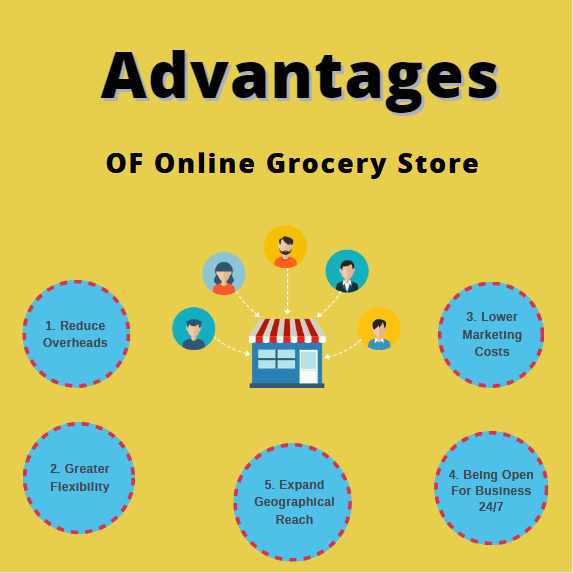A Comprehensive Overview to Why This Fad Is Improving Customer Habits and the Diverse Products That Are Changing Hands Online
In today's rapidly developing market, the merging of customization, sustainability, and technological technology is dramatically changing consumer habits. As more youthful generations progressively focus on honest factors to consider and custom-made experiences, brands are adapting their strategies to meet these expectations. This change is not simply a fleeting fad yet a profound shift that is affecting the types of items traded in the electronic realm. Comprehending the underlying variables driving this change is crucial for businesses aiming to prosper in this new environment, prompting a closer assessment of the effects for both consumers and brand names alike.
Key Variables Driving Modification
Progressively, customer habits is being formed by a confluence of vital factors that drive considerable adjustment in the industry. One of the most essential impacts is the rapid advancement of technology, which has changed exactly how customers gain access to details and make investing in decisions (Ecommerce). The expansion of smartphones and social media platforms allows consumers to participate in real-time interactions, causing more educated choices and heightened assumptions for customization
Moreover, market changes, consisting of the rise of millennials and Generation Z, are redefining market characteristics. These generations focus on experiences over material goods and seek brands that align with their worths, such as openness and authenticity. This change compels businesses to adapt their methods to reverberate with these aware customers.
Furthermore, the influence of globalization can not be forgotten. With the ability to go shopping across boundaries, consumers are exposed to a larger array of products and brand names, promoting a competitive environment where quality and customer support come to be vital. With each other, these factors develop a complicated landscape that forces businesses to be nimble in their strategy, ensuring they satisfy the progressing needs of a varied and educated consumer base.
The Rise of Sustainable Products
Just how can brands successfully reply to the growing consumer need for lasting items? To navigate this shift in consumer behavior, brands have to prioritize transparency and credibility in their sustainability efforts. This entails supplying clear details concerning sourcing, making processes, and the overall lifecycle of items. Brands can leverage accreditations, such as Fair Profession or natural labels, to construct depend on and trustworthiness with eco-conscious customers.
Furthermore, advancement in product style and products is vital. Companies are increasingly taking on naturally degradable, recycled, or upcycled materials to minimize ecological impact. This not only charms to consumers' preferences yet additionally settings brand names as leaders in sustainability.
Engaging in area efforts and sustaining environmental reasons can additionally enhance brand commitment. Consumers are extra inclined to support brand names that actively add to sustainability initiatives and show social responsibility.

Personalization in Purchasing Experiences
Customization has become a crucial component in boosting buying experiences, as consumers click here to read significantly seek customized interactions that reverberate with their private preferences. This change is driven by the expanding assumption for brands to understand and accommodate unique customer requirements, which has actually led to cutting-edge strategies in retail.
Ecommerce systems now utilize innovative formulas that analyze searching history, purchase behavior, and web demographic information to curate individualized item referrals. These customized experiences not just raise individual involvement however likewise foster brand name commitment, as customers are most likely to go back to platforms that offer relevant pointers.
In addition, customization extends past item suggestions; it incorporates targeted advertising and marketing approaches, customized e-mail projects, and individualized web experiences. Brand names that harness the power of information analytics can create a more smooth and satisfying purchasing experience. For example, vibrant pricing designs and customized price cuts can significantly boost consumer contentment, as they reflect an understanding of specific acquiring behaviors.
Inevitably, the emphasis on customization in shopping experiences represents a fundamental shift in consumer habits. As brands continue to adapt to these advancing assumptions, the capability to supply individualized interactions will certainly be crucial for maintaining competitive benefit in the retail landscape.
Influence of Social Media Site Trends
The increase of customization in buying experiences has been considerably affected by social media fads, as systems end up being main to consumer involvement and brand communication. Social network enables brands to find collect considerable information about consumer preferences, actions, and communications, which educates tailored advertising and marketing methods (Ecommerce). This data-driven strategy allows organizations to customize their offerings, boosting client satisfaction and commitment

Social media site additionally promotes area amongst consumers, urging discussions around products and brand names. This feeling of belonging influences acquiring decisions, as customers are more likely to get items recommended by their peers or neighborhoods. Additionally, user-generated web content, such as testimonials and endorsements shared on social platforms, substantially influences brand perception and depend on.
The Future of Online Consumer Habits
What will the future hold for on the internet customer actions as modern technology remains to advance? Significantly, consumers are anticipated to prioritize personalization and convenience in their on-line purchasing experiences. As expert system and artificial intelligence technologies advancement, merchants will harness information analytics to develop tailored shopping experiences, preparing for customer requirements and choices more accurately than in the past.
Moreover, the surge of immersive technologies, such as increased truth (AR) and virtual fact (VR), will redefine product interaction. Consumers will certainly be able to envision items in their own environments prior to purchasing, therefore decreasing unpredictability and enhancing complete satisfaction.
Sustainability will also play a crucial duty fit future customer behavior. As understanding of ecological issues expands, consumers are most likely to favor brands that show dedication to sustainable techniques, affecting investing in choices and brand name loyalty.
Furthermore, the integration of voice business and wise home tools will certainly improve the buying procedure, making transactions a lot more accessible. In this evolving landscape, businesses need to adapt to these changes, focusing on technology and customer interaction to remain competitive (Ecommerce). The future of on-line customer habits guarantees to be vibrant, driven by technical improvements and changing customer worths

Final Thought
The recurring transformation in consumer habits is considerably influenced by the merging of customization, sustainability, and technical developments. As brands adapt to fulfill the demands of millennials and Gen Z, the focus on tailored experiences and ethical sourcing comes to be significantly pronounced. The assimilation of social networks additionally enhances these changes, promoting area interaction and shaping buying choices. Subsequently, the development of the on-line market remains to reflect these changing dynamics, advertising a new age for customer interactions and product offerings.